CRITTERS AT or NEAR BRAZOS BEND STATE PARK--SNAKES
non-venomous 5
This
page was born 03/13/2023. Rickubis designed it.
(such as it
is.) Last update: 04/05/2023
Images
and contents on this page copyright ©2002-2023 Richard
M. Dashnau
Snakes page 1 nonvenomous 2001 -2002 Snakes page 6 Rat Snakes 2002 - 2021
Snakes page 2 nonvenomous 2003 -2004 Snakes page 7 venomous 2002 -2021
Snakes page 3 nonvenomous 2004 -2006
Snakes page 4 nonvenomous 2006 -2021
----------------------------------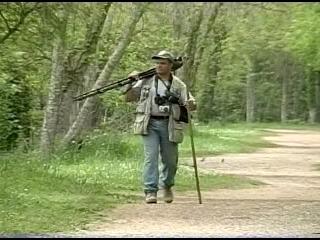
That's
me on a trail
(03/29/2004). As I get more pictures, these pages expand. I've gotten
enough
images of snakes to collect them on the snake pages. For most of
my
identification,
I'm using "Texas Snakes-a field guide", by James R. Dixon and John E.
Werler (2000, 2005)
On 03/11/2023
it was a pretty blustery day at Fiorenza Park. The water was
pretty rough from the wind, and not many birds were active; but I had
some luck anyway.
Around 10:30am, I saw this Yellow-bellied Water
Snake (Nerodia erythrogaster). It didn't move very much, probably
discouraged by the waves washing over everything, and the
intermittent sun.
This snake's body was almost black with no
markings, and it had a pale yellow underside. Each lip scale had dark
lines on one edge, the the eyes had prominent round pupils. Also, note
how
the bottom edge of the eye touches the top edge of at least
one of the upper lip scales. This was definitely one of the
non-venomous water snakes, and probably a Yellow-Bellied Water Snake.



About
20 minutes later, I saw the gray head of a Diamond-backed Water Snake
(Nerodia rhombifer) poking out of the water near some rocks. The waves
were active there as well, so the snake
just rested for a
while. I shot telephoto closeups (I didn't get closer so the
snake would stay out), and was having a good time making adjustments
with the camera. While I was adjusting the
exposure, I happened swing the camera up
a few degrees...and I noticed golden eyes in the darkness (darkness
caused by white-balance shift in the camera). When I looked closer, I
saw two
American Bullfrogs (Lithobates catesbeianus) hiding in the
shade!



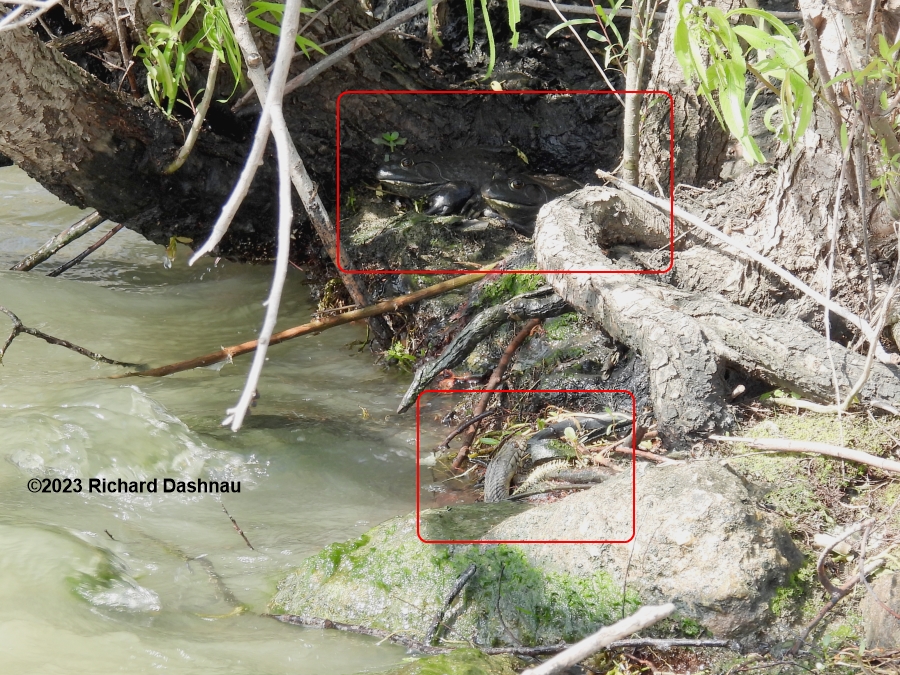
They
didn't move at all--even when the snake moved out of the water,
squeezed under a root, then poked its head over the top to look in my
direction. After being blown around for a few minutes
more (I even had trouble holding the camera steady), I moved
off.




On 03/05/2023 I was talking with a group of visitors near the
Observation Tower, when this small snake crawled onto the trail, almost
between their feet. I picked up the snake so it wouldn't
get
stepped on, and because it was such a great interpretive
moment--especially since a few of the group were apparently not snake
fans. Using my hand for scale, you can see how small it
was.
Overall dark green on top with faint darker bands; black background and
yellow markings on belly; changing to solid pale color under neck. Eyes
with round pupils, head oval viewed from
above,with
back of head
blending into neck. Scales on the upper surface are keeled (each scale
has raised ridge in the center). There are extra scales between the
bottom of eyes
and the
scales on the lips--not quite as obvious on such a small snake
(which is why I took the close images of its head). I'm pretty sure this was a young Mississippi Green Snake (Nerodia cyclopion).
It
was very docile and easy to handle (I only handled this one, because I
work for BBSP.) I released it into the grass on the other side of
the trail.




From Brazos Bend State Park
on 01/01/2023: Texas
Parks and Wildlife welcome the New Year by offering First Day Hike
events at various parks throughout the state. At BBSP, we were
part
of the celebration. We offered various intrerpretive tables set up
around the 40-Acre Lake trail; along with various park staff and
volunteers walking that trail and doing
"roving
interpretation" (I was in that group). The even was from 8am to
12pm, and after that I rwas walking back towards my car (along with 2
other volunteers), on the North side of the trail,
when a park
visitor riding by on a bike told us he'd seen a snake further up
the trail. We found the snake, and while one of the other volunteers
held it and shared facts about it to some visitors,
I took a
few pictures. It was another Western Mud Snake. The scales
seemed a bit dull, so it was possibly ready to molt soon. The
snake was released further off the trail, closer to the water.



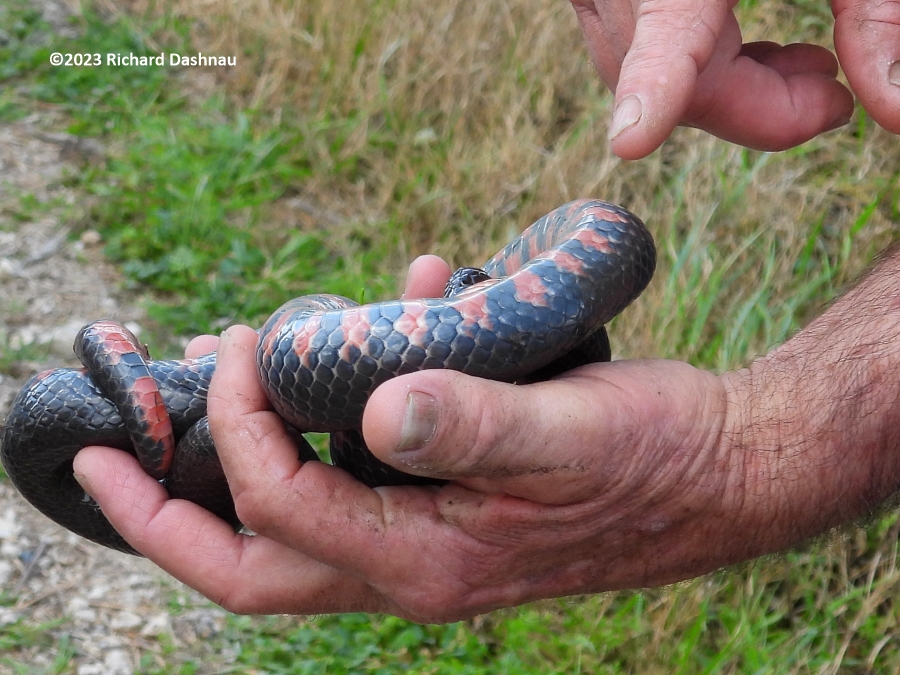
From Brazos Bend State Park
on 11/06/2022 About 11:30am, I was talking to some visitors about the baby gators when this beautiful
Western Mud Snake (Farancia abacura reinwardti)
crawled out of Pilant
Lake and crossed the trail
right next to us! I kept the visitors back so we could watch
it leisurely cross to our side. I was trying to get details, and
describing the snake
for the visitors; so I didn't get an overall
picture of it to compare with the trail width.
Mud snakes are usually nocturnal. It was probably moving during the day because Pilant Lake was dry.
The last image below
is a detail of its interesting tail. It's hard to see, but the tip of
that tail is actually a pretty sharp point It's not barbed,
but
it is unnerving if the snake probes you with it. Some
sources say that
they use the tail to probe the environment for its favorite food
(amphibians, especially sirens) and flush them out with the point. Along with the photos, I shot video of the snake.
If you'd like to see video of this beautiful snake crossing the trail, it is here.




About 5 minutes later, there more drama! Great
Blue Heron that had been stalking the area (as mentioned above...baby
gators were around) stabbed into the weeds and came up with
squirming
prey colored with stripes. At first I thought it had caught a baby
gator...but then recognized it had caught a snake. With the apparent
black with white speckled colors, I thought at
first--Speckled King
Snake. That didn't make sense (I don't think this is its favored
hunting zone). I watched the events happen, and tried capturing enough
images to identify the snake.
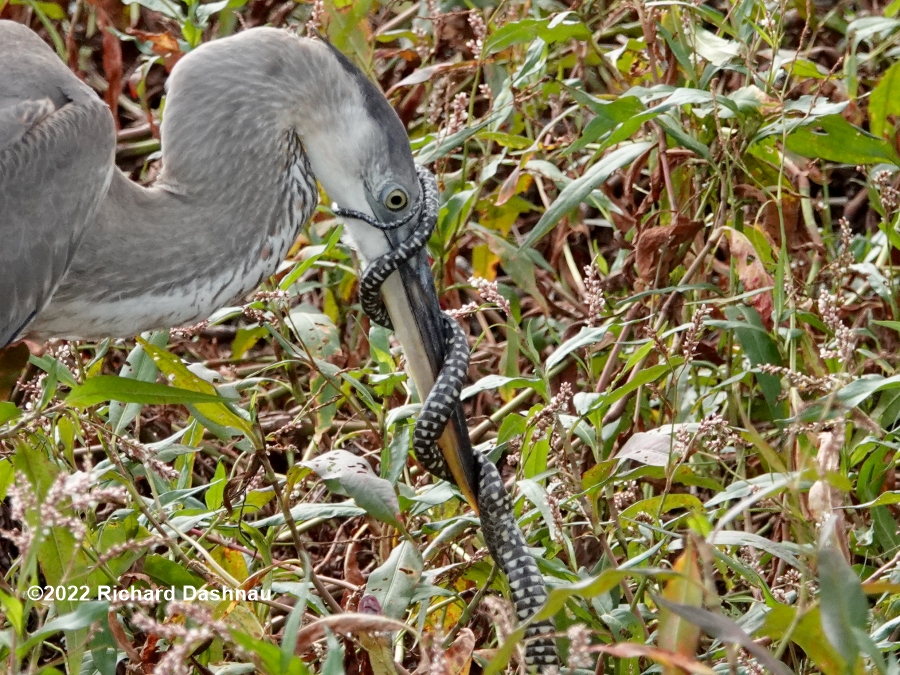
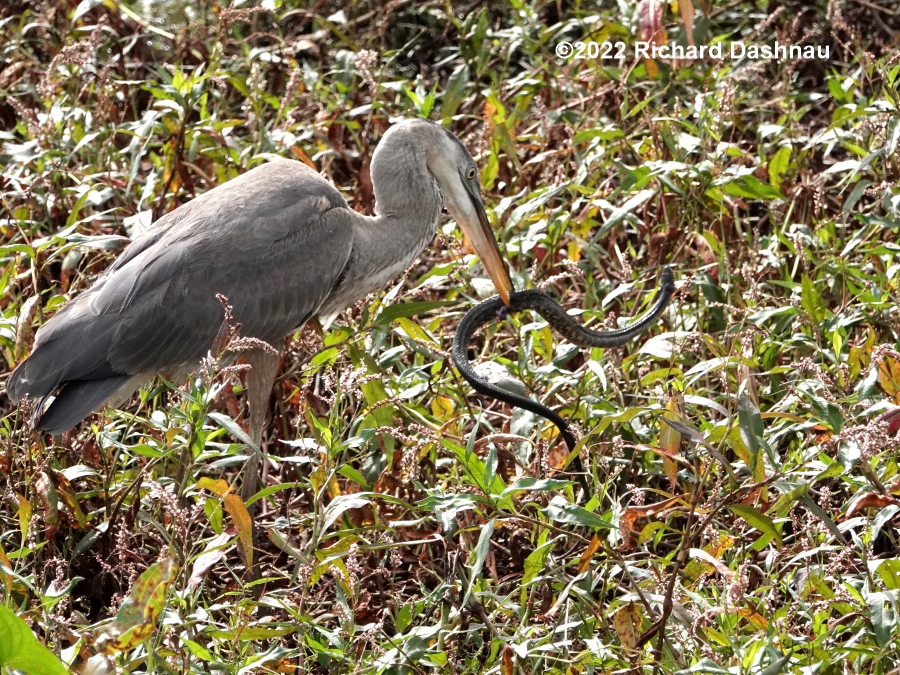
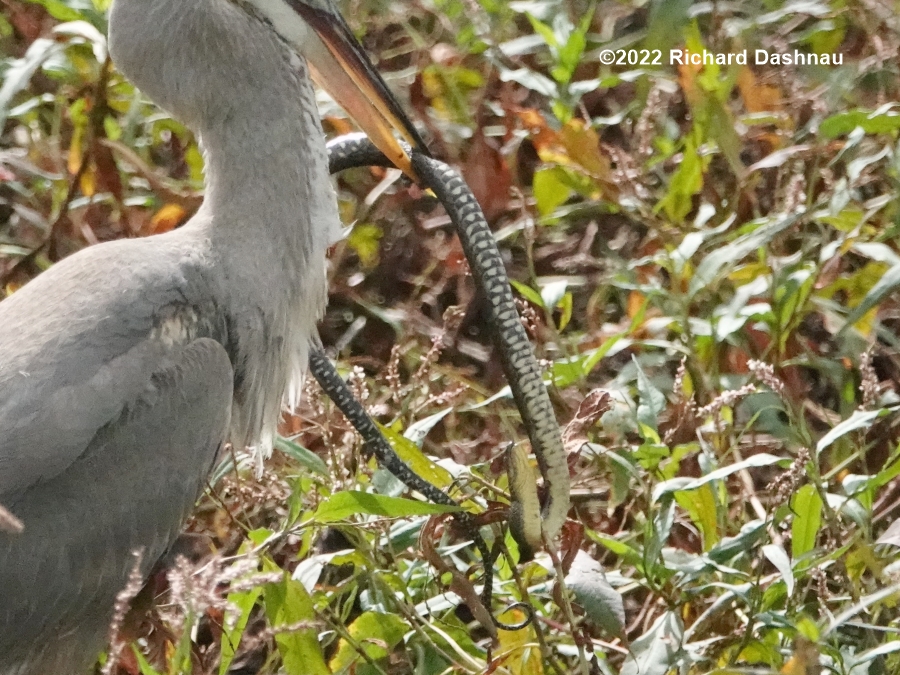
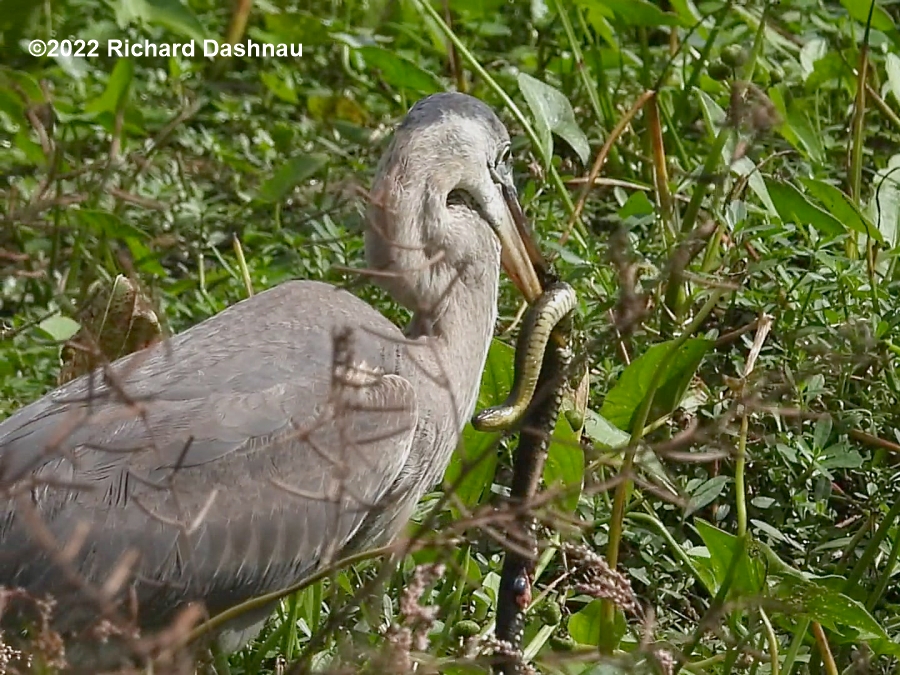
Some of the images are grabs from video, too. Let's try to
identify the snake. The head is not shaped like a pit-viper's (not
blunt profile, no gland swelling at the rear of the jaws).
The top
(dorsal)
color is a sort of dark green. Not any bands across the body(head shape
& round pupil & no mask(stripe on side of head) rule
out
Cottonmouth. No stripes along the dorsal and sides.
So not a Ribbon
Snake or Garter Snake. Could be a water snake. No orange colors on top
or bottom--so not Broadbanded Water Snake. But look at that pattern on
the belly, especially
visible starting near the tail and
stopping about 4 inches behind the head. It's not a double line--so not
a Crayfish Snake. How about this: "numerous yellowish
half-moons,
they cover most of
the belly, which is typically yellowish-white on
the forward third and grayish or brownish on the midbody and the rear".
--from Texas Snakes-A Field Guide by Dixon and Werler ©2000 page198.
This
sounds about right to me. If it is, then this was a Mississippi Green
Water Snake (Nerodia Cyclopion) The Heron dealt with the
snake as
they normally deal with large prey. There were
multiple stabbing,
picking up to sense movement, drop and stab again cycles,; until it was
time to swallow the snake. This was a bit of a problem, because the
snake had tied the rear of its
body into a very large knot. This
discourage the Heron, but only for a little while. It did finish its
meal. Interesting times in a very small part of the park.
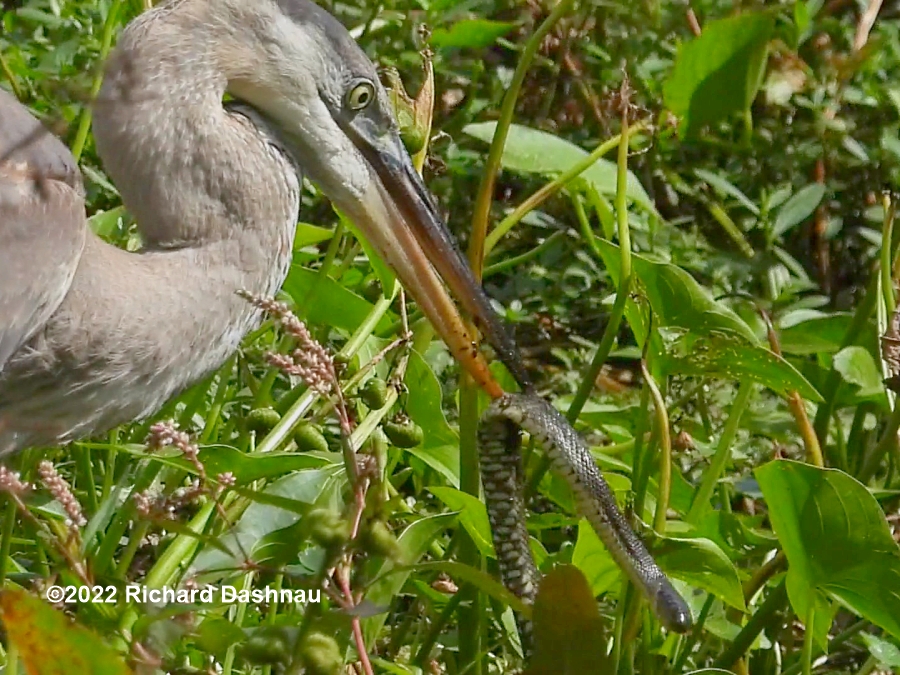
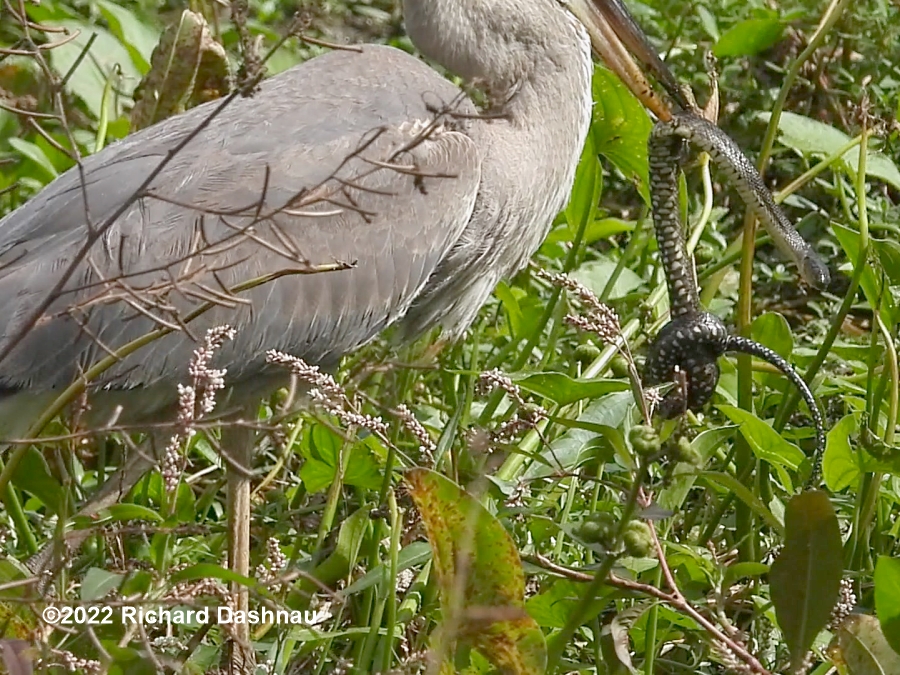
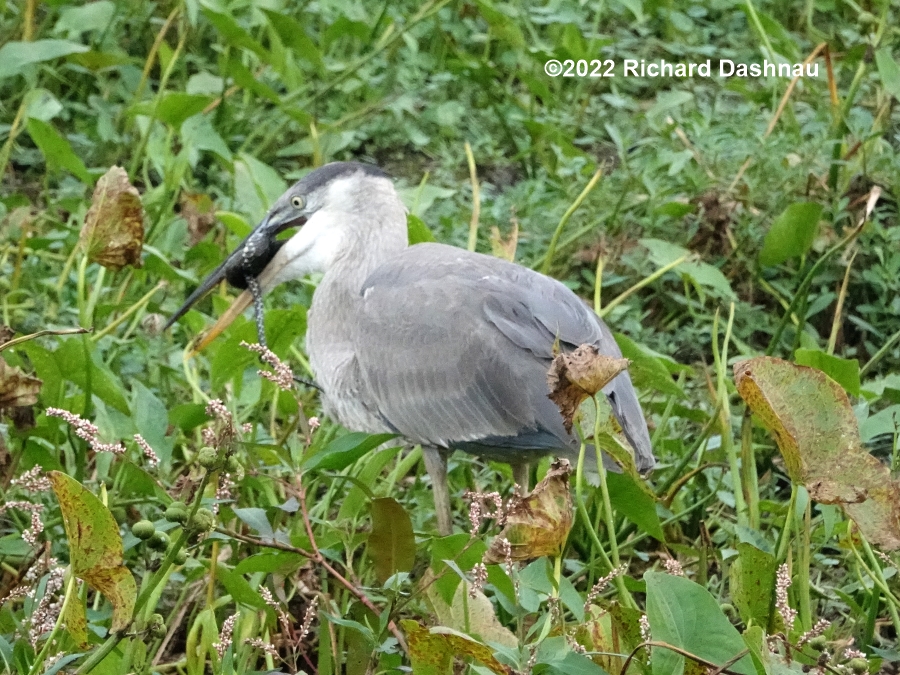
From Fiorenza Park North on 08/27/2022 and 09/03/2022
While I was at Fiorenza park on 8/27/22, I noticed a fisherman using a
cast net. I've seen others using cast
nets
there, and I assumed that they were catching small fish (usually shad)
for live bait. But I noticed that this fisherman was usually
just
dumping out his net, and discarding most of the fish.
He
threw most
back into the water, but there were always few stragglers left on the
bank. While I watched from the hill above, I noticed a water
snake swimming near him. As I watched
in
surprise, the snake moved
to where the fisherman had been (and he hadn't gone far), crawled up on
the grass, snatched a fish and slithered back into the water!
The
snake came back, but was scared away by passing bicycles. I
went
down to see if the snake would try for any of the other fish remaining
near the water. The snake reappeared, and I
stood
near the
snake and the few small fish hidden in the grass. The snake came
ashore, and was definitely on the hunt. Unfortunately, it returned to
the water when some other people
came by. I did get some video which I've edited into
this file.




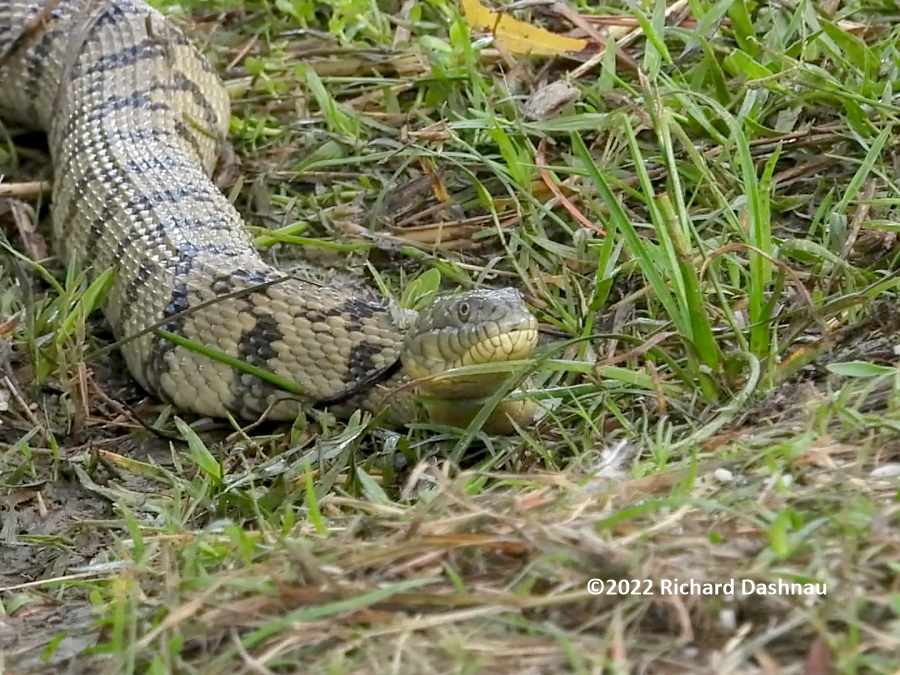
I spoke to
the fisherman and discovered he was fishing for
Tilapia. Tilapia are invasive in Texas waters, and can be legally taken
in various ways, including
cast
nets. I spoke with the fisherman
while he cast his net, and a snake seemed to approach after he'd thrown
and retrieved the net a few times (it might have been the same snake,
but it
could
have been another). This surprised me, because
the net casting operation causes some disturbance--there's the distinct
"choof" of the multiple weights hitting the water, and any
disturbance
while retrieving the net. But, I wondered it at least one
snake
had learned to associate those sounds with the extra supply of fish;
and so approached the disturbance.
I
might have been proved
correct, because in the second or third cast from the same spot the
fisherman pulled out--a water snake. I helped him and we
easily
released the snake...which I
didn't
see again. I left the park soon after.
I
returned to the park on 09/03/22, and saw a
different person--also
cast net fishing for Tilapia, and therefore discarding the smaller bait
fish. I
started looking for snakes, and told the
fisherman's family what
I was looking for. I started watching snakes--2, maybe three,
moving around the banks, and apparently hunting. On that day, the water
had gotten high enough to
submerge the low bridge,
so I
couldn't get to the other side of the channel. The snakes
were
certainly searching for prey near us. If we stood still, they'd climb
ashore just a few yards away,
search, and then return to
the
water. I'd told the family that the snakes were there for the fish, but
I didn't think they believed me...at first. I noticed a much
larger fish, at least 5 inches long.
(the small ones had been
2-3 inches long). The fish was moving through the water,
vertically, backwards, with its tail up. The fish was dead, and since
it was so large, I thought a turtle had it.
But it was being carried
by a Diamondback Water Snake! The snake tried to swallow the fish, but
eventually gave up and spit it out. I shot video and pictures. I think
the fish was a Gizzard
Shad (Dorsoma cepedianum).
Judging by
the general condition of the carcass, I believe the fish had been dead
for a while before the snake grabbed it. The snake might have
been
induced to grab the carcass
because it had already been
searching for fish that were trapped on or near the bank. Whatever the
reason (the snake never told me), it was a surprising experience.
To repeat, I've edited clips
from both days into this file.







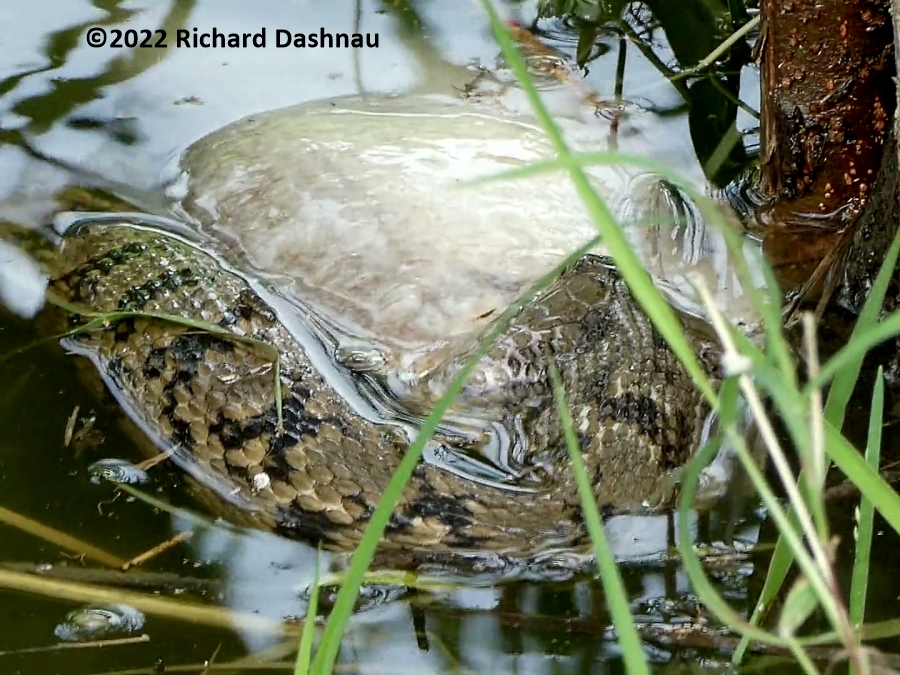



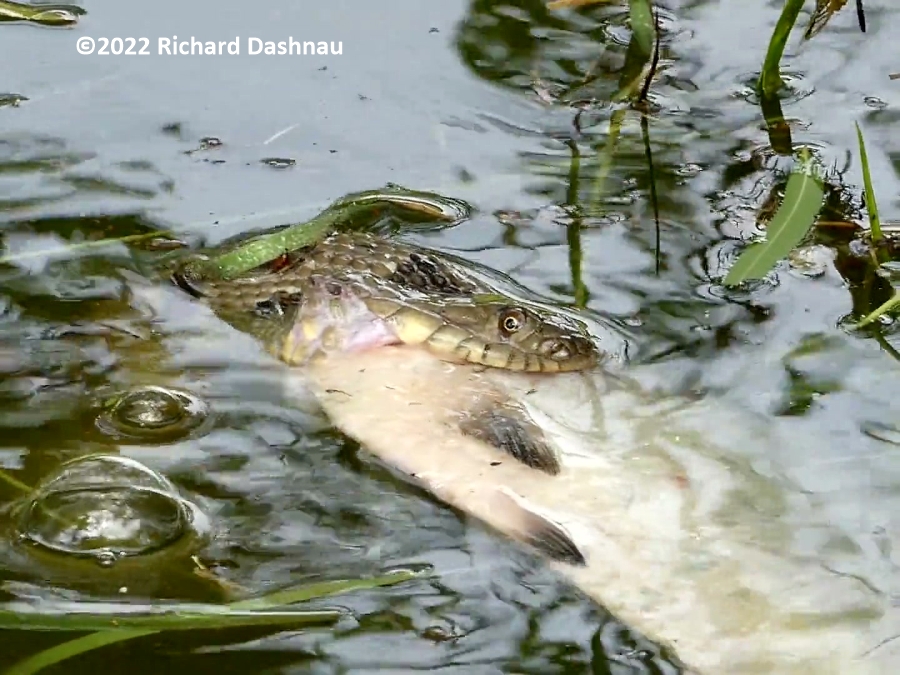



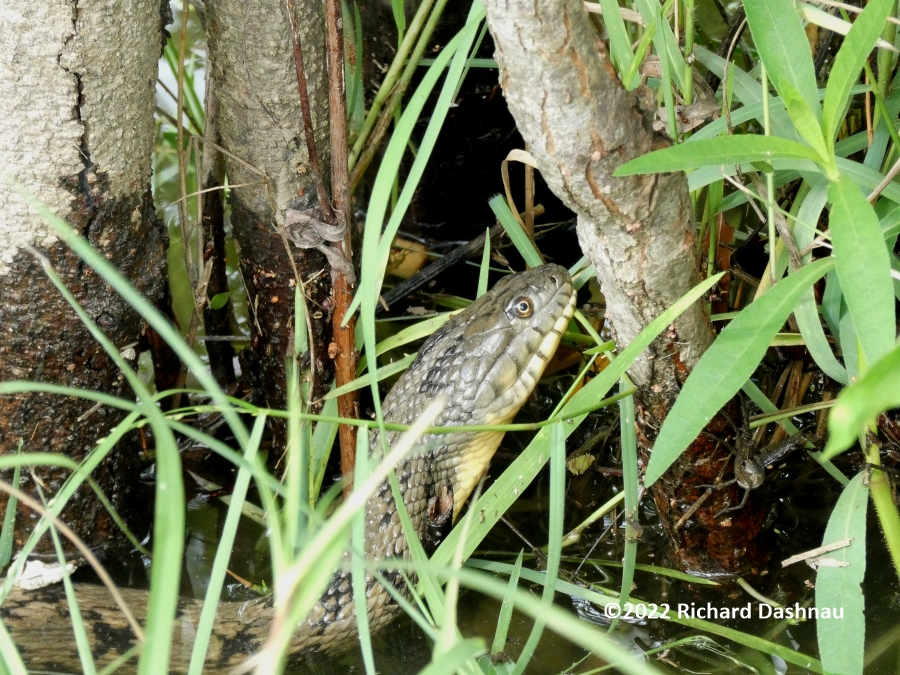

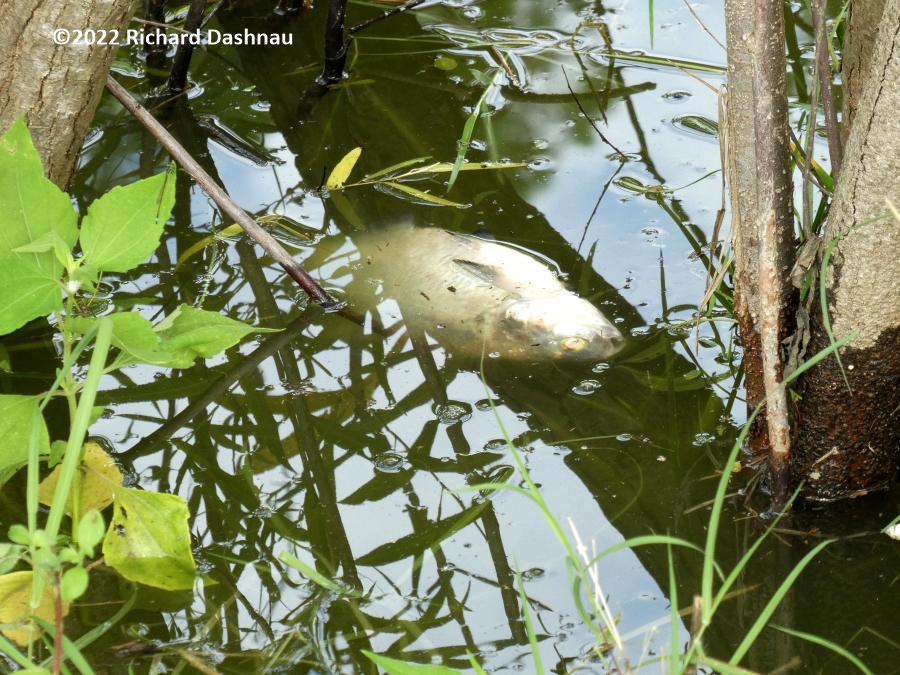
Snakes page 1 nonvenomous 2001 -2002 Snakes page 6 Rat Snakes 2002 - 2021
Snakes page 2 nonvenomous 2003 -2004 Snakes page 7 venomous 2002 -2021
Snakes page 3 nonvenomous 2004 -2006
Snakes page 4 nonvenomous 2006 -2021
Go back to my home page, Welcome
to rickubis.com
Go
back to the RICKUBISCAM
page.





















































